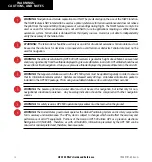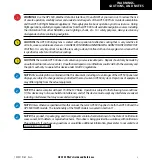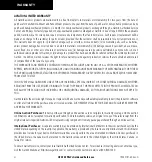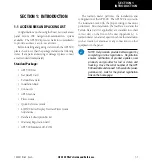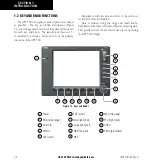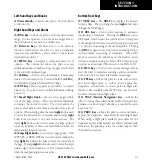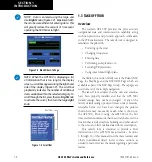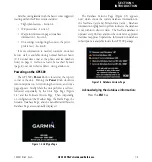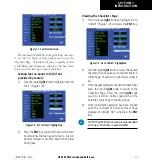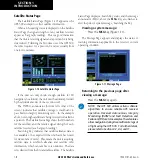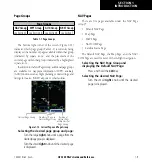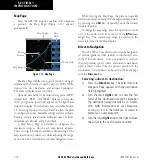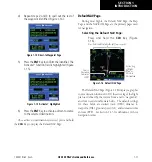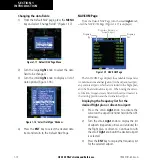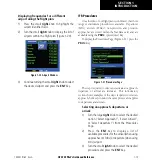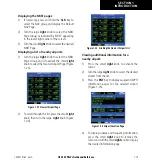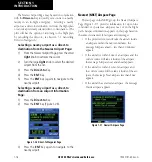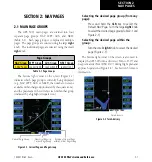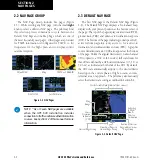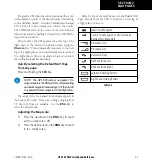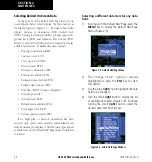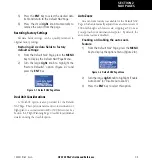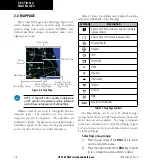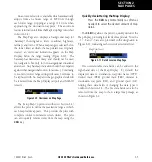
GPS 500 Pilot’s Guide and Reference
1-11
SECTION 1
INTRODUCTION
190-00181-60 Rev. G
4) Repeat steps 2 and 3 to spell out the rest of
the waypoint identifier (Figure 1-14).
Figure 1-14 Direct-to Waypoint Page
5) Press the
ENT
Key to confirm the identifier. The
‘Activate?’ function field is highlighted (Figure
1-15).
Figure 1-15 ‘Activate?’ Highlighted
6) Press the
ENT
Key to activate a direct-to course
to the selected destination.
Once a direct-to destination is selected, press and hold
the
CLR
Key to display the Default NAV Page.
Default NAV Page
During most flights, the Default NAV Page, the Map
Page, and the NAV/COM Page are the primary pages used
for navigation.
Selecting the Default NAV Page:
Press and hold the
CLR
Key (Figure
1-16).
Figure 1-16 Default NAV Page
Course
Deviation
Indicator
(CDI)
User-Selectable Data Fields (all four corners)
Active Leg
of Flight
Plan, or
Direct-to
Destination
The Default NAV Page (Figure 1-18) displays a graphic
course deviation indicator (CDI), the
active leg of the flight
plan (as defined by the current ‘from’ and ‘to’ waypoints),
and four user-selectable data fields. The default settings
for these fields are desired
track (DTK), distance to
waypoint (DIS), ground speed (GS), and estimated time
enroute (ETE). See Section 14.3 for definitions of these
navigation terms.
Summary of Contents for GPS 500
Page 1: ...GPS 500 Pilot s Guide and Reference ...
Page 2: ......
Page 72: ...GPS 500 Pilot s Guide and Reference 4 16 SECTION 4 FLIGHT PLANS Blank Page 190 00181 60 Rev G ...
Page 98: ...GPS 500 Pilot s Guide and Reference SECTION 5 PROCEDURES 5 26 Blank Page 190 00181 60 Rev G ...
Page 134: ...GPS 500 Pilot s Guide and Reference 7 12 SECTION 7 NRST PAGES Blank Page 190 00181 60 Rev G ...
Page 255: ......


